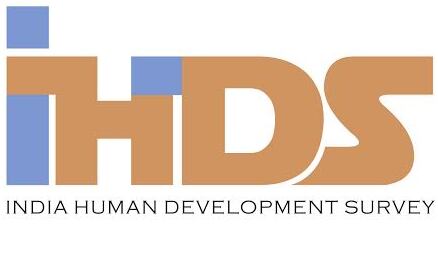Social Groups
Back to Constructed Variables.
Social Group India has a vast array of jatis (castes) and religions. IHDS asked three questions about the householdes caste and religion all from page 3 of the household questionnaire:
id12 records the caste of the household informant as reported to the interviewer (e.g., chamar, thakur, bania) however it was listed by the interviewer.
id13 asked the household informant to classify these many responses into one of four commonly used categories: Brahmin, OBC (Other Backward Classes), SC (Scheduled Castes, dalits), and ST (Scheduled Tribes, adivasis), plus a residual "Other" category.
id14 asked the religion of the household head seven commonly reported categories (Hindu, Muslim, Christian, Sikh, Buddhist, Jain, and Tribal), plus a residual "Other" category and "None". For some overview purposes, it is useful to collapse religion and caste into a single composite variable. (However, IHDS staff analyses have shown that using both religion and caste separately is generally more informative when analyses permit - "caste" distinctions among non-Hindus are often substantial.)
For an overview religion and caste variable, IHDS includes groups8:
| value | group | unweightedfrequency | weighted percentage |
| 1 | Brahmins | 2,421 | 5.10% |
| 2 | Forward castes | 7,151 | 15.50% |
| 3 | OBCs | 14,068 | 35.70% |
| 4 | Dalits | 8,333 | 22.00% |
| 5 | Adivasis | 3,439 | 7.80% |
| 6 | Muslims | 4,708 | 11.20% |
| 7 | Sikhs, Jains | 683 | 1.10% |
| 8 | Christians | 751 | 1.70% |
To combine caste and religion, this code follows these rules of precedence: a) Dalits and Adivasis are coded as 4s and 5s, regardless of religion (id14); b) Except for a above, Muslims, Jains, and Christians are coded as 6s, 7s, and 8s, regardless of caste (id13); c) Except for a above, Sikhs are coded as 3 if OBC, otherwise as 7; d) Hindus are coded as 1-4 according to caste (id13). Users can devise their own combination if they choose, but we repeat the advice to use both religion and caste codes separately whenever possible.
Back to Constructed Variables.
